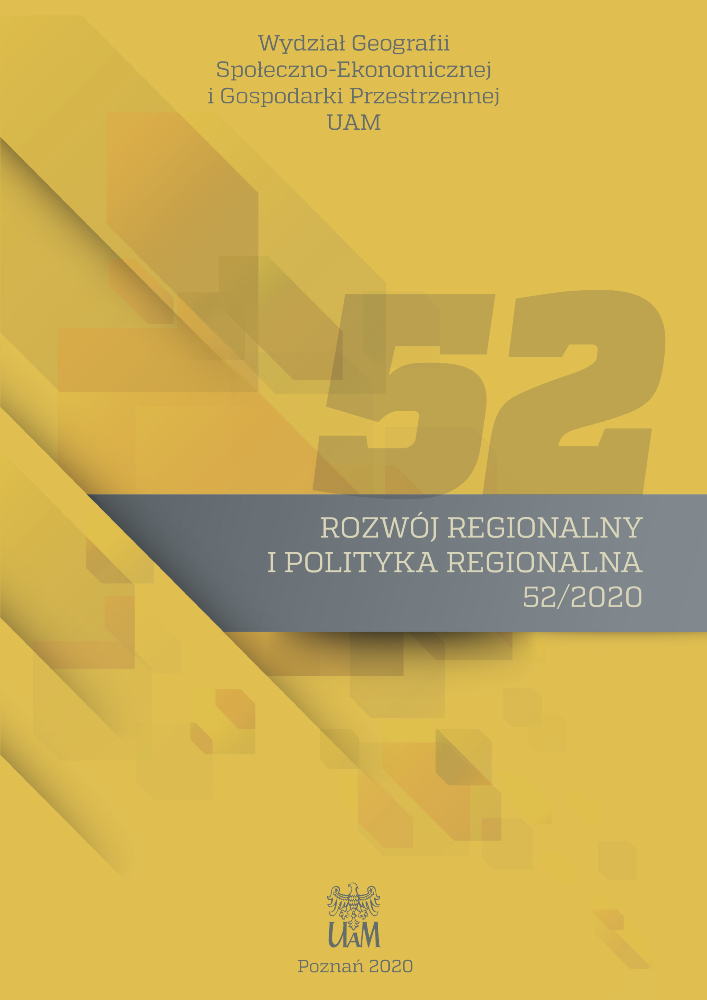Abstract
The main objective of this study is to find out how tourism is perceived by local authorities of rural communes in wielkopolskie voivodeship and to what extend its development is deliberately planned in their strategic documents. In order to achieve this objective, the author analysed actual strategic documents issued by rural communes using computer and context analysis methods. The author analysed more than 7500 pages in total (80 full documents). Special attention was paid to two selected sections of the documents which are strategic and operational objectives as well as the SWOT analysis. The selected sections were analysed in the context of tourism development. Moreover, the analysis allowed to indicate if the documents are sufficient tools of tourism development planning. The study showed that most of the analysed materials cannot be perceived as effective tools of tourism development planning. The main drawbacks of these documents include extremely high level of generality, not mentioning particular places of development projects implementation and lack of appreciation and understanding of cooperation and networking. However, there is one essential trend in planning that should be emphasized: more and more regions turn to active and short-term
tourism. These forms can be successfully implemented in regions with no obvious tourist potential
and reinvigorate their socio-economic growth.
References
Balińska A., Błaszczak M. 2014. Przyrodniczo-społeczne dysfunkcje rozwoju turystyki w Tajlandii. Turystyka i Rozwój Regionalny, 1: 7–18.
Bosiacki S. 2016. Turystyka aktywna w strategii rozwoju turystyki w województwie wielkopolskim, Ekonomiczne Problemy Turystyki, 1(33): 151–162.
Dogru T., Bulut U. 2018. Is tourism an engine for economic recovery? Theory and empirical evidence, Tourism Management, 67: 425–434.
Giampiccoli A., Mtapuri O. 2014. Moving beyond the 3S’s – Sun, Sea and Sun: An Interpretation of the Tourism Development Strategy Framework for Adu Dabi, U.A.E. Le Geographe du monde arabe, 17(4): 339–356.
Gibbons J.D., Fish M. 1988. Thailand’s international tourism: success and current challenges. International Journal of Hospitality Management, 7, 2: 161–166.
International Tourism Highlights 2019 Edition. 2020 (http://mkt.unwto.org/publication/unwto-international-tourism-highlights).
Kłodziński M. 2009. Znaczenie i potrzeba tworzenia strategii rozwoju gminy. Zagadnienia Ekonomiki Rolnej, 319(2): 33–47.
Kondracki J. 2011. Geografia regionalna Polski. PWN, Warszawa.
Kozak M.W. 2010. Turystyka: niewykorzystana szansa rozwoju regionów? Studia Regionalne i Lokalne, 4(42): 43–59.
Matusiak K. 2011. Innowacje i transfer technologii. Słownik pojęć. Polska Agencja Rozwoju Przedsiębiorczości, Warszawa.
Parysek J.J. 2015. Rola lokalnego samorządu terytorialnego w rozwoju społeczno-gospodarczym i przestrzennym gmin. Ruch Prawniczy, Ekonomiczny i Socjologiczny, 3: 27–46.
Pawlikowska-Piechotka A. 2013. Planowanie przestrzeni turystycznej. Wydawnictwo Novae Res, Gdynia.
Rotariu I. 2006. The new Tourism Communication: from 3S to 3E with case study of Romania. University Library of Munich, Germany, MRPA Paper.
Szwacka-Mokrzycka J. 2012. Znaczenie turystyki w strategii rozwoju gminy. Studia Ekonomiczne i Regionalne, 5(1): 28–33.
UNWTO Tourism Highlights 2017 Edition 2018 (http://mkt.unwto.org/publication/unwto-tourism-highlights).
Wykaz identyfikatorów i nazw jednostek podziału terytorialnego kraju 2010.
License
Copyright (c) 2020 Klaudia Nowicka

This work is licensed under a Creative Commons Attribution 4.0 International License.

